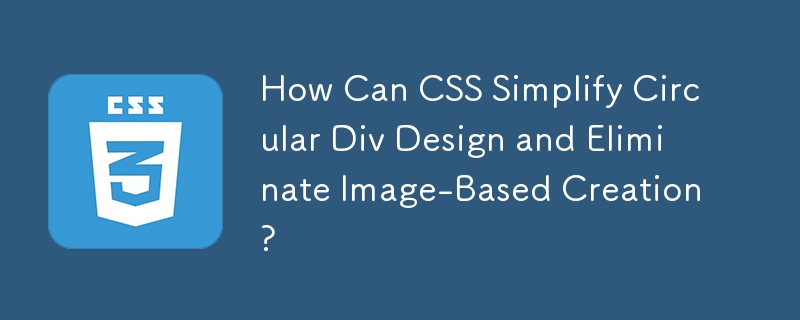

A Simplified Approach to Designing Circular Divs: Avoiding the Hassle of Image-Based Creation
Creating circular divs has traditionally involved the laborious process of crafting separate images for various sizes, an inconvenience that developers have long grappled with. But fear not, for a more efficient solution awaits. With the introduction of CSS, you can seamlessly generate circular elements and specify their radius to your heart's content.
The CSS code we present offers a versatile way to control the size and appearance of your circles. The ".circleBase" class serves as the foundation, applying a border-radius of 50% to achieve the circular shape. For cross-browser compatibility, we utilize PIE.htc for Internet Explorer 8 and older.
Working in conjunction with ".circleBase," additional classes define the dimensions, background color, and border properties of the circles. The ".type1" class, for instance, renders a 100px by 100px circle painted in yellow and outlined in red, while ".type2" and ".type3" showcase different sizes and border styles.
To incorporate these circular divs into your HTML, simply employ the corresponding classes. For example:
Embracing this approach not only relieves you of the tedious task of creating separate images for every circle but also empowers you with the flexibility to dynamically adjust their appearance through CSS.
The above is the detailed content of How Can CSS Simplify Circular Div Design and Eliminate Image-Based Creation?. For more information, please follow other related articles on the PHP Chinese website!
 What are the DDoS attack tools?
What are the DDoS attack tools?
 Formal digital currency trading platform
Formal digital currency trading platform
 How to enable JavaScript
How to enable JavaScript
 What are the formal digital currency trading platforms?
What are the formal digital currency trading platforms?
 Where is the audio interface located on the motherboard?
Where is the audio interface located on the motherboard?
 What are the common linux systems?
What are the common linux systems?
 Official download and installation of Euro-Italian Exchange app
Official download and installation of Euro-Italian Exchange app
 Introduction to win11 screenshot shortcut keys
Introduction to win11 screenshot shortcut keys




